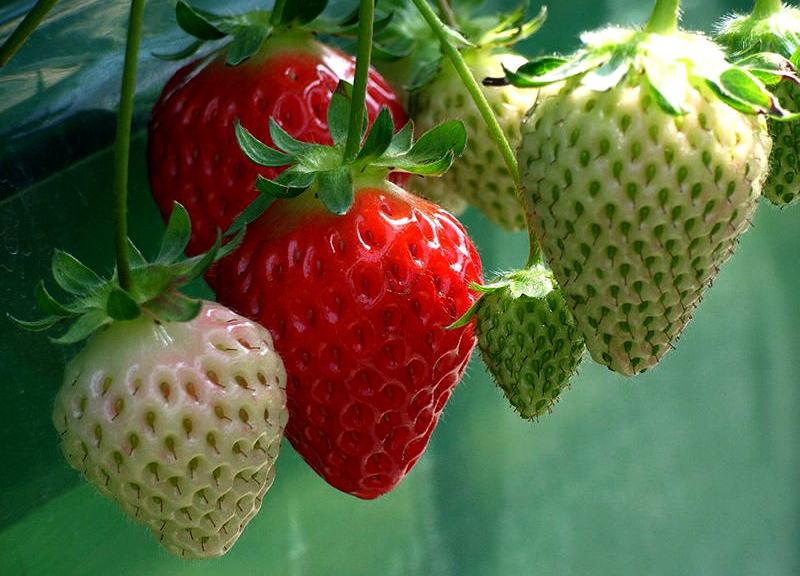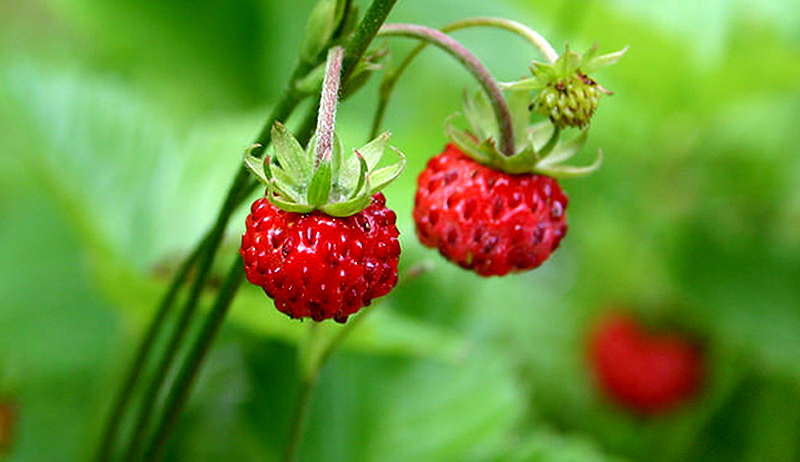
A few days ago, I asked my 4-year-old daughter what I should write about this week. This can be a fairly dangerous exercise, but because I wasn’t incredibly inspired, I threw caution to the wind. She was wearing a Strawberry Shortcake shirt, so after thinking for a moment, she looked down and announced that I should write about strawberries.
To all of you who have had enough winter and are now craving the sweet taste of spring, I will apologize in advance. Discussing strawberries may well push you over the edge, but I am bound by parent-child responsibility to write as I was instructed. It’s truly a timely post if you are hoping to plant strawberries this year—you want to get your plant orders in fairly soon.
There are two different kinds of strawberry you can add to your garden: Wild strawberry (Fragaria vesca) and the big, juicy garden strawberry (Fragaria ananassa). Wild strawberry is a bit harder to find, but it may be worth the effort. Many people believe the tiny fruit of wild strawberries is much more vibrant and sweet. I find the difference between it and garden strawberries is like the difference between a summer-picked heirloom tomato and a hothouse variety.
The strawberry is in the rose family, meaning it’s also related to red raspberry (Rubus idaeus). Both fruit plants carry a phytochemical called fragarine within their leaves. This chemical has been found to support uterine health by toning and strengthening the muscle.
Benefits of Garden Strawberries

While both wild and garden strawberries have their medicinal uses, F. ananassa is used more for its fruit than its leaves. The fruit are high in vitamin C and tannins, making them lightly astringent and perfect for a skin tightening facial or for whitening your teeth. I have tried whitening my teeth with strawberries, and it’s extremely effective. Internally, they are supportive to the immune system because of their antioxidant content.
Benefits of Wild Strawberries

F. vesca is the strawberry you would use for the healing aspect of their leaves. Due to the astringency of wild strawberry leaves, you can use them for diarrhea, as well as many different kinds of female imbalances. The fruit has been used for pain relief in arthritis and gout.
Growing Strawberries

You can plant wild strawberries by seed, though I’ve never seen them for sale this way. Instead, it’s best to forage them. If you want to grow the more common F. ananassa, you’ll be looking for plants only. The plants spread by a stem modification called a stolon. A stolon is really a lifeline by which the parent moves a baby plant out and away from itself. You might have friends with strawberries who can share some of the little plantlets that form at the end of each stolon. These plants will root easily and become independent from the parent once the stolon is cut.
I can’t wait for spring and strawberry season! Get out there and look for those wild strawberries this year and try some berries, but don’t forget to save some leaves to dry for later.





One reply on “Wild vs. Garden Strawberries: Which Should I Grow?”
[…] Source: Hobby Farm […]